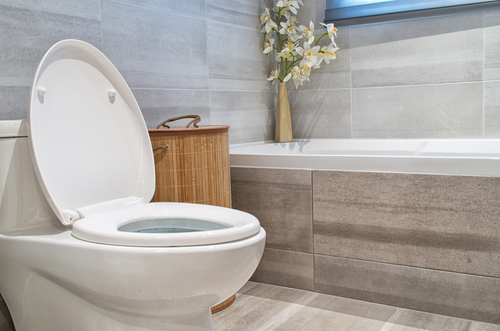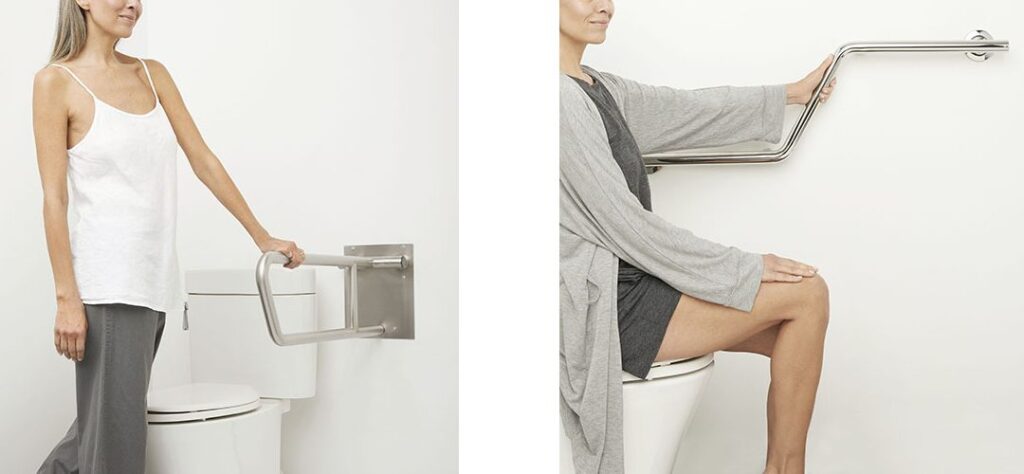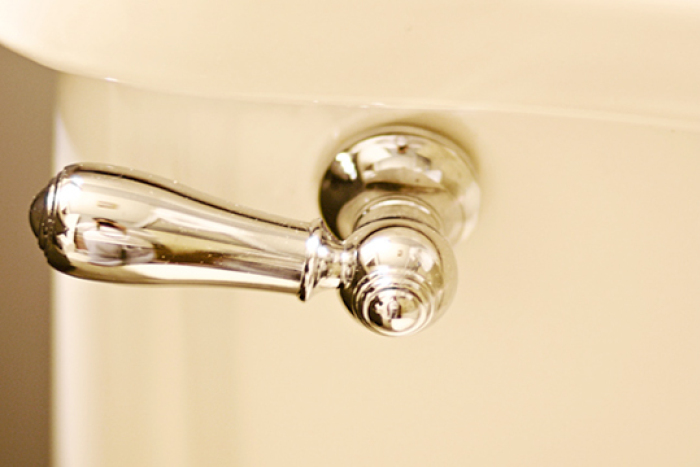Are Low-Flow Toilets Worth It?
Thinking of installing a low flow toilet? Whether you’re looking to save money on water costs or to be kinder to the environment, find out the pros and cons.
Low-flow, or low-flush toilets are popular with many homeowners who like to conserve water, whether to save money or to limit their home’s impact on the environment. These efficient, water saving toilets have come a long way since they were first introduced in the 1990s, with many styles available today offering better functionality and more options than in previous years.
How Do Low Flush Toilets Work?
Low-flush toilets use one of two methods to clear waste: gravity or pressure-assistance. Gravity-driven toilets clear waste when the flapper in the toilet tank moves and water is released. Water flows down from the tank into the bowl, flushing its contents, while gravity carries the waste down into and through the pipes.
How Much Water Does a Low-flow Toilet Use?
Toilets are the biggest water drain in American households according to the Environmental Protection Agency (EPA), accounting for almost 30 percent of water use in the home. Older toilets can use anywhere from 3.5 to 7 gallons of water with every flush. Consequently, many cities and counties have begun passing conservation laws requiring homeowners and landlords to install low-flow toilets.
What Are Some Low-flow Toilet Problems?
Common complaints about these toilets include noise and flushing or water pressure issues.
They rely on a pressure-assisted system that makes a distinctive “whooshing” sound which tends to be louder than a regular toilet flush.
If they do not operate properly, they may not force waste far enough down the drain, which can lead to clogs and other plumbing system issues.
If the water pressure in your home is not sufficient for the smooth operation of low-flow toilets, they will not eliminate waste with a single flush or work as intended.

How to Install an Upflush Toilet
Installing a new bathroom in a basement can be a major undertaking. The concrete floor must be broken into and drainpipes installed, then new concrete must be poured.
An upflushing unit makes the job much easier. Instead of using gravity to drain, an upflushing toilet has a heavy-duty pump activated by a float and switch. When the lower portion of the tank fills, the pump turns on, forcing waste up through the 2-inch drain. A 3-inch vent is required. Make sure the vent and drain conform to local plumbing codes.
Some upflushing units, especially those installed in the ’70s and ’80s, were unreliable and needed frequent repairs. Newer units are more dependable. Ask a plumbing supplier about the track record of the model you are considering. Make sure the unit’s pump is powerful enough to send wastewater the required distance to the house’s drain.
An upflushing unit has a heavy-duty pump activated by a float and switch. When the lower portion of the tank fills, the pump turns on, forcing waste up through the 2-inch drain. A 3-inch vent is required. Make sure the vent and drain conform to local plumbing codes.
You’ll need roughly a day to install the toilet. Get started by purchasing a unit, drawing a plan, and consulting with a plumbing inspector to make sure the plumbing will meet code.

Toilet Seat Buying Guide
Most of us choose not to think too much about how much time we spend sitting on the toilet, but the fact is, a decent amount of our lives passes while we’re there. Most toilet seats don’t have that big of a job to do (they open, they close, they fit properly on the toilet), and yet choosing the right one can have an influence on your experience every time you go to the bathroom. Considering how big a role in your life your toilet plays, it’s worth finding the best toilet seat for your needs.
Types of Toilet Seats
There are two main types of toilet seats. For most people buying a toilet seat, your choice between the two will be easy – you should go with whatever fits your toilet. Of course, this is easier said than done, and it’s important to understand the difference between different shapes to ensure that you get the best toilet seat to fit the toilet you already have in your home.
Elongated Toilet Seats:
Just like the name indicates, elongated toilet seats feature an oval shape and are slightly longer than traditional round seats. This type of toilet seat is considered to be more comfortable by many users, but often cost a bit more. This oblong toilet seat has all the same benefits as other shapes, and can be found in a variety of colors and materials. The length of an elongated toilet seat measures at 18.5 inches.
Round Toilet Seats:
Round toilet seats are shorter and rounder than elongated seats. This is the most common type you’ll encounter in your hunt to find the best toilet seat for your home. Generally, a round toilet seat will cost a little bit less than its elongated cousin. Measuring at 16.5 inches, the round seat will also take up less space.
How to Measure Toilet Seat
By the time you’re buying a toilet seat, the decision of round versus elongated has probably already been made for you. If you’re not sure by looking at your toilet which type of toilet seat you need, simply measure the length of it.
Grab a tape measure or long wooden ruler (at least 20 inches).
Locate the holes where the seat is bolted into the toilet.
From these bolts, measure directly down the center to the front of the bowl.

Where Should Toilet Grab Bars Be Installed?
Is it time to install toilet grab bars in your home? Safety bars are a mobility aid to help keep you safe and independent through all the years of your life. Proper grab bar installation is critical to provide peace of mind and make you feel safer and more comfortable getting around your own home. As you prepare to install your toilet grab bars, make sure you consider these important elements.
Guidelines for Grab Bars
In order to be sure your toilet grab bars are installed properly, review the ADA guidelines. If you’re installing grab bars in a private home, you likely won’t need to comply with ADA standards. However, it’s worth considering the guidelines, since they were determined by experts for most common needs and use.
Spacing and Diameter
The ADA standards suggest;
having 1 ½” of space between the wall and the grab bar to allow ample space for you to get a firm grip (609.3).
Having 1 ¼” diameter bar allows for a comfortable grip. (609.2)
Make sure there are no projecting objects within 12 inches above the grab bar. Why is this important? If someone loses their balance or slips, you want to make sure there is nothing in the way of quickly grabbing the bar.
Location and Placement
As per the ADA guidelines:
grab bars should be provided on the side wall closest to the toilet (604.5). This will help someone with sitting or standing, or someone in transferring from a wheelchair onto the toilet seat.
there should also be a grab bar placed on the wall behind the toilet. (604.5) Why is there a grab bar behind the toilet? This is helpful for caregivers helping someone to sit or stand.
The ADA says that grab bars should be installed horizontally between 33 inches and 36 inches maximum above the finished floor to the top of the gripping surface (section 609.4). This is likely due to average height and common usage.
Structural Strength
The ADA speaks to the construction and strength of grab bars for highest level of safety
Grab bars cannot rotate within their fittings (609.6). A solid grab bar is much safer.
When properly installed, grab bars will support 250 pounds of force. This is to support the added level of force of someone falling and grabbing the bar quickly.
Grab bars need to be installed where there is reinforcement in the walls, whether it’s mounted on studs, or on reinforced walls.
Practical Things For Your Bathroom You Won’t Regret Buying
A ~ghost-like~ Squatty Potty that’ll help you position yourself (and your colon) properly for some major #2 efficiency.
Poo-Pourri to spray beforehand and eliminate odors in the toilet bowl because nature has to call, but it doesn’t have to linger
Promising review: “We are a family of six in a small one-bathroom house. This is, to put it lightly, a horrific nightmare — particularly after my teenage son spends some time in the bathroom. After a couple of weeks of gentle encouragement (‘YOU ARE KILLING EVERYONE. SPRAY THAT STUFF ON THE WATER BEFORE YOU POOP OR I’M TAKING AWAY YOUR PHONE AND, SO HELP ME GOD, I WILL CALL YOUR GIRLFRIEND AND TELL HER EXACTLY WHY YOU GOT IT TAKEN AWAY.’) he started using it regularly. The bathroom is much less disgusting now after he leaves.
Or if you’re not into the idea of a pre-spray, an odor-neutralizing candle made for pet-filled homes will also do some heavy duty work on bathroom smells.
I’ve owned several of these soy candles (soy candles burn slower, FYI) and continue to love them over all other candles. Read all about why I love them more than any other candles.
A TubShroom for clearing recently departed strands out of your shower drain sooo much faster.
Sorry not sorry, but I’m also obsessed with this product! I have thick, long hair and have lived with other people with a lot of hair. This thing is totally game-changing! If you don’t believe me (EVEN THOUGH YOU SHOULD),
A shower curtain liner with mesh storage pockets I love and will buy for as long as it’s a thing I can buy.
Yep, you’re looking at my shower! I upgraded from a corner tension rod caddy and never want to go back. The mesh pockets drain water so your liner won’t get all icky. And they make it easy to tell the difference between the minimalist packaging for your face wash and shave cream when it’s way too early in the morning.